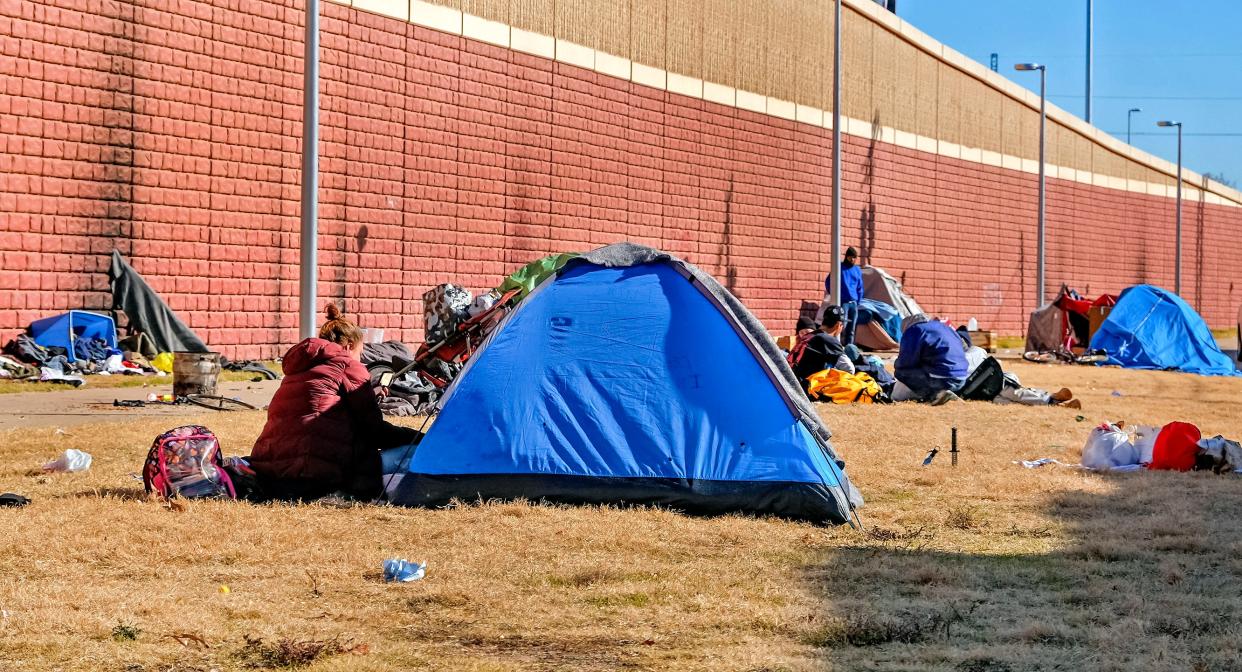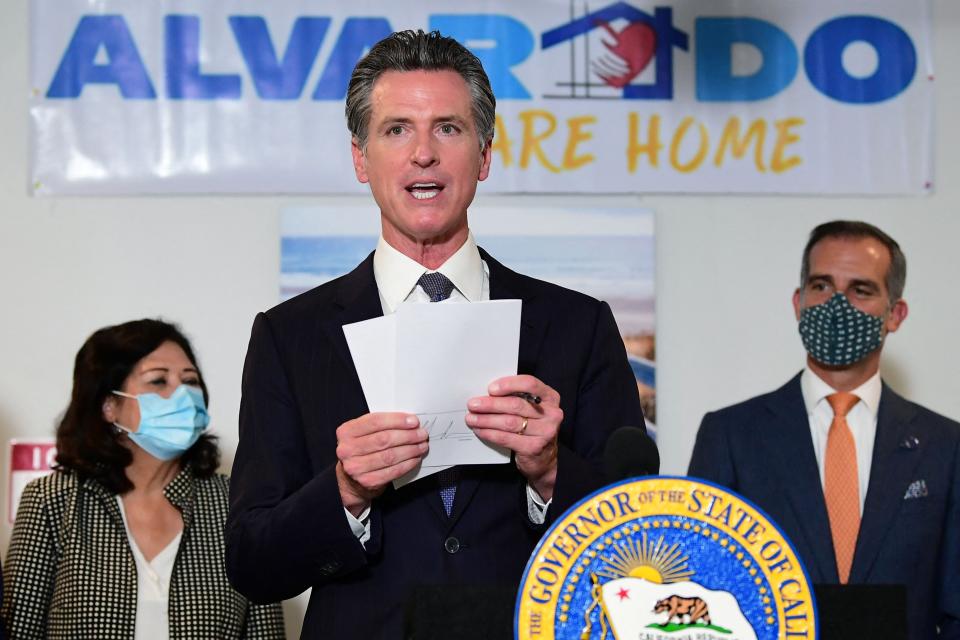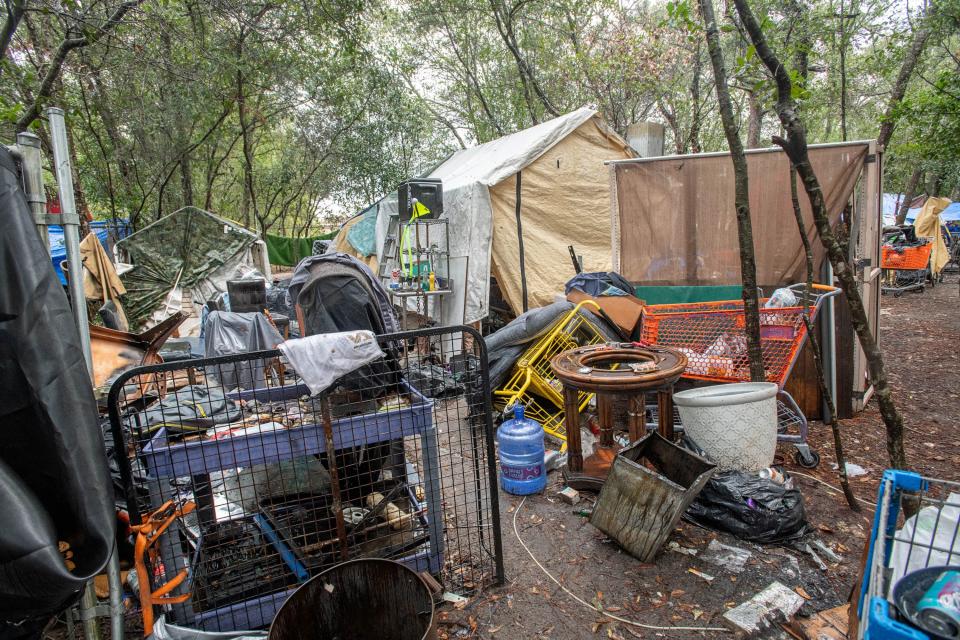Is housing health care? State Medicaid programs increasingly say ‘yes’

States are plowing billions of dollars into a high-stakes health care experiment: using scarce public health insurance money to house the poorest and sickest Americans.
Homelessness jumped 12% in the U.S. last year, to an estimated 653,104 Americans, the highest level on record. At least 19 states are directing money from Medicaid – the state-federal health insurance program for low-income people – to address the crisis, according to the Centers for Medicare and Medicaid Services.
California is going the biggest, pumping $12 billion into a Medicaid initiative largely to help homeless patients find housing, pay for it and avoid eviction. Arizona is allocating $550 million in Medicaid funding primarily to cover six months of rent for homeless people. Oregon is spending more than $1 billion on services such as emergency rental assistance for patients facing homelessness.
Even ruby-red Arkansas will dedicate nearly $100 million partly to house its neediest. Tennessee, West Virginia and Montana are in the pipeline.
The Biden administration is encouraging other states to jump in. It’s part of a broader White House strategy that encourages Medicaid directors to offer social services alongside traditional medical care, with the goal of making their residents healthier.
“A health care dollar can do more than just pay for a doctor visit or hospital stay,” Xavier Becerra, secretary of the U.S. Department of Health and Human Services, told KFF Health News. “Is there anyone who would deny that someone who is homeless is going to have a harder time also keeping their health up?”
It’s not just states experimenting with this approach. Sherry Glied, a New York University professor and former Obama administration official, pointed to at least 57 health systems and 917 hospitals around the country that have launched social service initiatives, with most focusing on housing.

Becerra acknowledged these initiatives are experimental. But he said the federal government can no longer ignore the rampant death and disease that is plaguing homeless people.
“We’re simply saying, ‘State, if you can prove to us that with this Medicaid dollar you will improve someone’s health or health outcome, then you have essentially served the purpose of the Medicaid program and you’re saving taxpayers more money,’” he said.
However, evidence supporting this argument is mixed. There’s little agreement that this strategy will provide a long-term fix for vulnerable patients’ health or housing.
For instance, in a trial by researchers at the University of California, San Francisco, homeless people in Santa Clara County, California, who were randomly assigned to receive long-term housing and services used the psychiatric emergency department 38% less than a control group over four years while increasing their use of routine mental health care. But participants were still hospitalized at high rates and continued to rely on the emergency room.
Still, states are forging ahead.
Arizona: Saving $4,300 per person
Arizona saw a 5% jump in homelessness in 2023. “Housing agencies are maxed out and we have enormous need to help stabilize people,” said Alex Demyan, assistant director of the state’s Medicaid agency.
A state-funded Medicaid initiative is providing 3,000 rent vouchers for people in southern Arizona who have a severe mental illness and are homeless or at risk of becoming homeless. That program slashed ER visits 45% and reduced hospital inpatient admissions 53% at the six-month mark after patients started receiving services, while increasing less costly preventive care 56% and saving $4,300 per member, per month, according to state data.
“We’ve seen such positive health outcomes and cost reductions as a result, so it made total sense to us to expand our work in that space,” Demyan said.
Now the state is adding a Medicaid program that will prioritize homeless people and those at risk of losing housing who also have a mental health condition and chronic illness. It will provide rent payments for up to six months and transitional housing, which can include shelters with intensive services.
'A sad situation': Homeless campers in Arizona prepare to leave as closure approaches
West Coast solutions
California is home to nearly 30% of the nation’s homeless population. The state launched its massive CalAIM initiative in 2022 to offer a wide variety of social services to a small sliver of the state’s roughly 15 million Medicaid enrollees. A large part of the resources is going to housing.
“If you’re saddled with a great deal of either physical or behavioral health conditions, whether it’s diabetes or HIV, high blood pressure or schizophrenia, without housing, it’s really hard to stabilize those conditions,” said Mark Ghaly, secretary of the California Health and Human Services Agency.
But he cautioned that Medicaid’s core focus must remain getting people healthy, even if they’re living outside. That is a monumental and expensive challenge because conditions like diabetes, heart disease and HIV require continuous treatment and often multiple medications.
“I do not think that health care is responsible for solving homelessness,” Ghaly said. “But if housing instability or lack of housing is one of the key drivers getting in the way of being healthy, then absolutely we need to pay attention to it.”
Health insurers that provide Medicaid coverage in California can choose whether to provide housing services, but Oregon is requiring Medicaid insurers to do so. The state is targeting patients at risk of becoming homeless. Participants will be eligible for six months of rent and other services when the program launches in November, said Dave Baden, deputy director of the Oregon Health Authority.
Mission creep
Not all health care leaders – or even homelessness experts – believe housing is the best use of Medicaid money, especially for a safety-net program that faces routine criticism for failing to provide health care to many enrollees.
State Medicaid programs often struggle to deliver basic medical services, such as childhood dental visits and breast cancer screenings. In California, the state spending the most on housing, children on Medicaid did not have timely access to care for mental health or substance use in 2022, according to a November audit.
“If you’re on Medicaid, you often have to wait months and months for a specialty visit, even if it’s a life-threatening concern, so I worry about what people won’t be able to get because of this,” said Margot Kushel, a leading homelessness researcher and doctor in San Francisco who primarily treats low-income patients.
Kushel said the danger is that most Medicaid housing assistance can be used only once or is time-limited.
“By the time folks get into housing, they’re already really, really sick,” she said. “What happens at the end of six months when rental assistance like free rent runs out?”
That’s why the Oregon program is “really trying to focus on people teetering on the brink,” deputy director Baden said. “If you’re already homeless, you really need longer, sustainable housing dollars to keep that person housed.”
Glied, the NYU professor, warned in a recent health policy analysis of mission creep in health care. She cautioned that social services could be a “dangerous distraction,” and argued that health programs should instead improve basic care and leave housing to organizations that specialize in it.
“Providing people with food or housing is pretty far removed from the core mission of health care,” she told KFF Health News.

Peter Lee, another former Obama administration official and the founding executive director of California’s Obamacare exchange, said health care providers should consider offering some housing and social services, but he too fears such initiatives may divert money from traditional medicine and prevent patients from getting care.
“In the past five to 10 years, there has been a lot of recognition that health is about much more than actual health care. Very true,” Lee said. “The question is how do you address those issues while health care itself is not doing too great.”
Still, states say they’re committed – even if their initiatives don’t pass a traditional cost-benefit analysis.
“The singular focus on a financial return on investment is not as clear as it was previously,” said Cindy Mann, a federal Medicaid director under Obama. “States are just seeing how little sense it makes to treat people and then release them back to the streets.”
This article was produced by KFF Health News, which publishes California Healthline, an editorially independent service of the California Health Care Foundation. KFF Health News is a national newsroom that produces in-depth journalism about health issues and is one of the core operating programs at KFF – an independent source of health policy research, polling and journalism.
This article originally appeared on USA TODAY: Is housing health care? State Medicaid programs increasingly say ‘yes’

